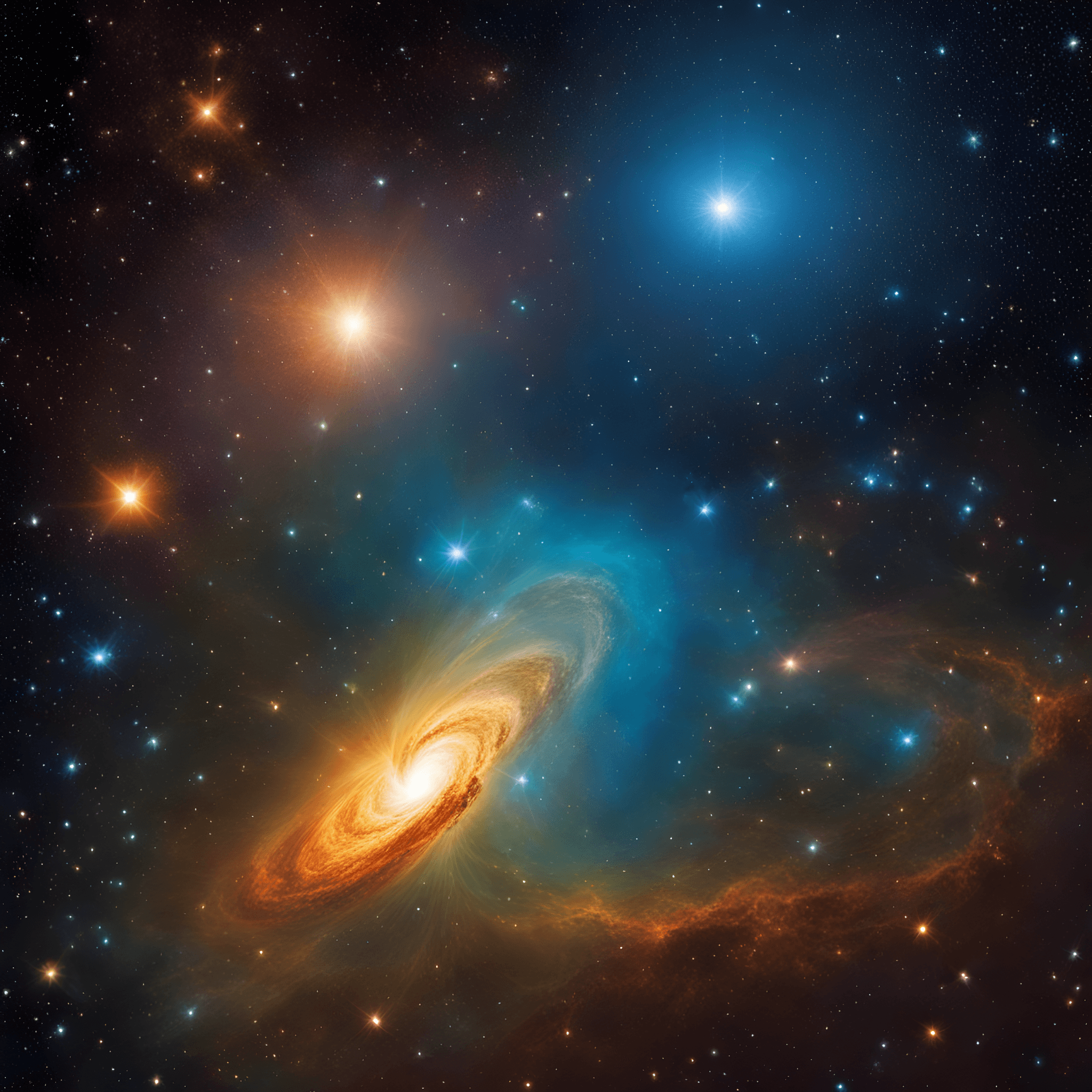Stellar Evolution: The Birth, Life, and Death of Massive Stars
Stars are the cosmic furnaces that fuel the universe with energy and elements. Their life journeys are awe-inspiring tales of transformation and transcendence, especially those of massive stars, which live fast and die hard, often meeting their fate as exotic black holes or neutron stars.
The Life Cycle of Massive Stars
The life of a star is a constant battle against the crushing embrace of gravity. For massive stars, this journey begins within dense clouds of gas and dust known as stellar nurseries. As gravity pulls the materials within these clouds closer together, a protostar is born. The core of the protostar continues to compress until the pressures and temperatures soar high enough to ignite nuclear fusion, marking the birth of a star.
Massive stars live their lives in the fast lane. They possess a higher mass, which means they have more fuel, but their core temperatures are also much higher, causing them to burn through their fuel at a rapid pace. They spend the majority of their lives in the Main Sequence phase, where they sustain a delicate balance between the gravitational forces pulling inwards and the pressure from nuclear fusion pushing outwards.
Nuclear Fusion: The Heartbeat of a Star
Nuclear fusion is the process that powers a star, where atomic nuclei combine to form heavier nuclei, releasing a tremendous amount of energy in the process. In the core of massive stars, hydrogen nuclei fuse together to form helium in a process known as hydrogen burning. This fusion process releases energy in the form of light and heat, creating a pressure that counteracts the force of gravity trying to compress the star.
As the star ages, it begins to fuse heavier and heavier elements in its core, going through stages of helium burning, carbon burning, and so on, until it reaches the point of iron production. The fusion process up to iron is exothermic, meaning it releases energy, which supports the star against gravitational collapse.
The Final Curtain: The End of Fusion and Onset of Gravitational Collapse

The fusion of iron, however, is endothermic, meaning it requires more energy than it releases. When a massive star's core begins to fuse iron, it's a telltale sign that the end is near. The core becomes unstable as it's no longer able to generate enough pressure to counteract the force of gravity.
Eventually, the inevitable happens - the core collapses under its own gravity in a fraction of a second, causing the inner part of the star to shrink drastically. This rapid core collapse results in a supernova explosion, an awe-inspiring display of cosmic fireworks that outshines entire galaxies for a brief moment.
The fate of the core now depends on its mass. If it's below a certain threshold, it will become a dense neutron star. However, if the core's mass is above this threshold, gravity triumphs utterly, compressing the core into a point of infinite density, birthing a black hole, a point of no return where not even light can escape gravity's inexorable pull.
The journey of massive stars, from their tumultuous birth to their dramatic demise, showcases the magnificent yet ruthless mechanisms of the cosmos, leading to the formation of black holes, one of the most mysterious and fascinating entities in the universe.
